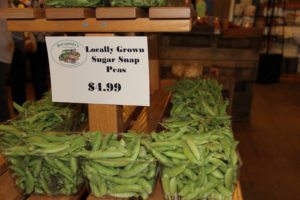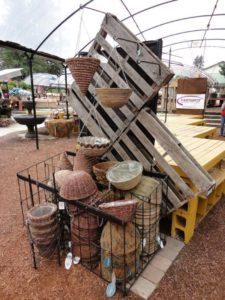Here’s To Greater Profits In 2008
Life shouldn’t be lived with the “I coulda, I shoulda, I woulda” attitude, and those who don’t learn from mistakes are prone to repeat them. As your season winds down, hopefully you’re counting your cash and have realized the best year in your garden center’s history. Regardless of what the 2007 season did for you, what are your plans for greater profits in 2008?
People are all busier than they’ve ever been, yet it seems like they don’t get everything finished that they should. So let’s focus on what we might have learned over the last few years and how these things can be put into practice to bring in even more cash.
Steven Covey has restated an old idea for our new times. He says that tasks come in two categories (urgent and not urgent) along with two sub-categories (important and not important). Successful people concentrate first on tasks that are urgent and important. If you have a task that is urgent but not important, question why you’re doing it. Don’t let someone else set your agenda.
For example, do you listen to a media salesman’s pitch for advertising before you have your marketing plan in place? The not-urgent but important task is to first design the marketing plan, then visit with the media sales reps. In the real world, nobody is calling to set appointments to write a marketing plan, but they do call to sell advertising. By being “polite,” people misallocate time by putting the cart before the horse.
If this seems like a trivial or unrealistic example, look at the folks who are wildly successful. Planning is a bigger part of their lives than it is of the average garden center operator. What’s the difference between the 20-year-old garden center with three employees and the 20-year-old center with 50 employees? Sure, location can play a part and so can capitalization, but as the industry gets more complex, planning and discipline play an increasingly larger part. Visiting a larger garden center or a small center with large cash deposits in the bank you will see strong evidence of planning, discipline and processes.
Planning For Profit
Nowhere is planning more critical than planning for profit. The biggest contributor to your profit is gross margin. When will you take time to attend to the urgent and important task of determining your gross margin plan?
Gross margin comes in dollars. It’s the difference between what it costs you to produce/buy the product and what you collect from your ultimate customer. For years, many garden centers have chased gross margin percentages. While percentages do eventually translate into dollars, today’s successful garden centers tend to look at gross margin dollars as a goal.
Percentages can be misleading due to product mix and total volumes. Obviously, a garden center doing $500,000 will need a higher percentage to pay rent than a center doing $8 million. You’ll probably find it most useful to determine the dollars of gross margin you desire and from that determine what your overall percentage needs to be. Check out the April 2006 column in the article archives at www.lgrmag.com for more information on gross margin.
Setting The Right Price
Selling more by lowering your price can cut your gross margin percentage but increase your total margin dollars. Raising your price can do the same thing. Mike Berns, Berns Garden Center, Middletown, Ohio, offered Berns Super Bloomers at four for $20. He felt he and his team worked too hard for too little money. Based on the quality of his product, the customer response and his sell-through rate, he held his breath and changed the pricing to $6.99 each or four for $25.
Total unit sales were virtually flat, which means his sales went up 25 percent and his gross margin skyrocketed. Berns has not heard one word about the price change from customers or sales associates. Notice also that the customer has an incentive to buy four plants instead of one ($6.99 each compared to four for $25.) This is a compelling argument that impacts customers more than saying $6.99 each or $6.25 for four or more.
How you say something can be just as important as what you say.
Berns told me, “We’re learning to be ‘margin controllers.’ It’s gross margin that pays the bills, not sales volume. My missing component was financial information about margin including inventory control.”
Roses are obviously a must-have product category but are not the most lucrative for Berns. His solution? He moved the roses out to the “back 40,” putting them at the far end of his acreage. Rose sales were virtually unchanged. Those people who wanted to buy roses found the new department and shopped just like they always did.
He transformed the former rose department space to container gardening. That doesn’t mean hanging baskets for $10. Some of the containers are large, decorative urns selling for $300 or more and with much higher margins than roses. The result? Rose income is level, but margin from the high-visibility new container gardening area is three times what the roses brought in.
Be Flexible
Today’s retailing demands more flexible pricing than “the good ol’ days.” Gone forever is the time when you can take the same percentage margin on all products. Gone also are the days when you can expect the same percentage margin all year long. Astute retailers will be flexible in their pricing as competition and other market factors evolve. Many sophisticated retailers actually have “markdown budgets” because they know they’ll have to mark down various products during the year. The feeling is that if you have a pre-established budget amount for markdowns, you’re more likely to take them as they are needed rather than unrealistically keeping the price above what customers will pay.
You could have products that need to be marked down soon. Consider staggered markdowns. Rather than waiting until the season’s end and going one-half off, what if you did a “buy two, get one free” deal now? You would be collecting four times the dollars than if you sold one for one-half off, and you’re moving three items instead of one. It’s more merchandise moved and more dollars generated. Additionally, it’s money in the bank today instead of a potential for less money tomorrow or maybe never.
Find A Way
One of the first places retailers look for more margin is from their vendors. While I’m not knocking that practice, understand that it’s a finite possibility. If your vendor is charging you $1, how much can you grind the vendor down? Theoretically, the most you can gain is $1 if you get the vendor to give it to you for free, but if you can find ways to sell more and/or sell it at a higher price, your gain is truly infinite.
It becomes a question of your time and urgent/important versus not urgent/not important. While all readers didn’t agree with my stance on buying groups (see the August 2006 article in the article archives section of www.lgrmag.com), it’s still true that regardless of size, it’s more efficient to delegate your purchasing to one of the successful garden center buying groups than it is to attempt to do it all alone. (Interesting that those who disagree aren’t members of buying groups, while those who agree utilize the profit potential of the group.)
Special Pricing For Special Product
Without a doubt, a great garden center is Baker’s Acres, Alexandria, Ohio. Check out its Web site (www.bakersacresgreenhouse.com) to understand the concept. Besides showing customers a good time, it has literally thousands of plant varieties for sale. Chris and Nancy Baker love the business and they love their customers, some of whom actually drive for hours to come and find some rare plants.
Nancy told the story of the “cleome lady” who drove hundreds of miles only to learn Baker’s didn’t have enough of a certain variety of cleome she wanted. The customer didn’t know anywhere else she could buy it. That’s a cue to raise your price. Specialized products deserve special pricing.
No, you can’t arbitrarily raise the price on every item you sell, but you certainly can increase your margins on the products only you have in your market. You have to have margin to survive. Nancy reports they raised their prices this year. “It’s just great. Nobody has said a word about the different pricing. Everything has sold just as well.”
In a twist on volume pricing, Baker’s Acres offers “Tuesday Bring a Friend” day. On a relatively slow sales day, the Bakers give 10-percent off if two or more shoppers show up together. It gives friends an excuse to share a shopping trip and evens out the week’s customer flow for the garden center.
Consumers Search For Value
It’s time for an ugly truth we all ignore: Nobody comes to a garden center thinking they are getting the lowest price on every item, every time. What they are looking for is good value.
One of the common ways to give your customer extra value while maintaining some margin integrity is through “bonus bucks” programs. Think of it as a customer loyalty program. It’s your investment in making sure customers continue to return for subsequent purchases.
Berns Bonus Bucks are earned by purchases and can be redeemed in March, June, September and November. Sure, Berns is giving away some margin with his program. In exchange for that, he’s bringing customers in before or after his peak season. He sees it as a great trade: building customer loyalty and guaranteeing traffic at a time most garden centers don’t have it. Consider what you would spend in advertising to drive that many customers to your store. Generally, loyalty programs drive more traffic than advertising a much better return on your marketing dollars.
Your customers want you to be there for them. It’s your job to price the merchandise so you will be there, with a smile on your face and customers’ money in your pocket.

















 Videos
Videos





